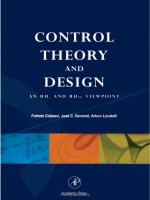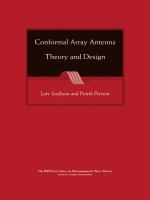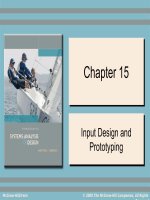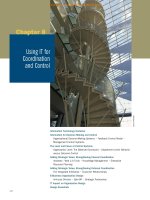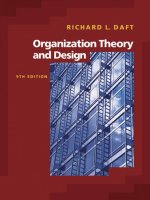Organization theory and design: Lecture 15
Bạn đang xem bản rút gọn của tài liệu. Xem và tải ngay bản đầy đủ của tài liệu tại đây (31.84 KB, 7 trang )
Organizational Level Service
Technologies
• Changing focus from production to service
15
1
Differences Between Service &
Manufacturing Technologies
Manufacturing
Service
Tangible product
Intangible
Inventory
No inventory
Capital asset intense
Lab/Knowledge intense
Little direct customer
involvement
Much more
HR less important
Most important
Quality measured directly
Perceived
Long response time
Short
Site mod important
Site extremely important
2
Differences Between Service &
Manufacturing Technologies
Examples:
• SERVICE: airlines, hotels, consultants,
health care, law firms
• PRODUCT & SERVICE: fast-food
outlets, cosmetics, real estate,
stockbrokers, retail stores
• PRODUCT: soft drink companies, steel
companies, automobiles, mining, food
processing plants
3
Designing Service Organizations
Structure
Boundary
spanners
Service
Few
Product
Many
Decision making Decentralized Centralized
Formalization
Lower
Higher
Employee skills
High
Lower
Skill emphasis
Inter personal Technical
4
Departmental Technology
• Departments often have characteristics
similar to service technology, providing
services to other departments within the
organization.
• Each department has its production
process that consists of a distinct
technology
• Framework used on the understanding of
departmental technologies was developed
by Charles Perrow.
5
Framework
Uses Two Elements:
1. Variety:
–
1.
Task variety, frequency of unexpected and novel events that
occur in the conversion process, if they are high Variety is
high
Analyzability:
–
–
–
–
When the process is analyzable, the work can be reduced to
mechanical steps and participants can follow a set pattern to
solve problems.
The reference for solutions is SOPs, manuals, text books, etc.
Not so if the problem has low analyzability
Here the reference for solution is much less explicit and lies in
implicit or tacit transfer of knowledge which is built through
accumulated experiences.
6
Framework
VARIETY
•
To what extent would you say your work is routine?
•
Do most of the times people solve the problem/issue
the same way?
•
Are members performing repetitive activities in doing
their jobs?
ANALYZABILITY
•
To what extent is there a clearly known way to do the
major types of work you normally encounter?
•
To what extent is there an understandable sequence of
steps that can be followed in doing your work?
•
To do your work, to what can you actually rely on
established procedures and practices?
7



